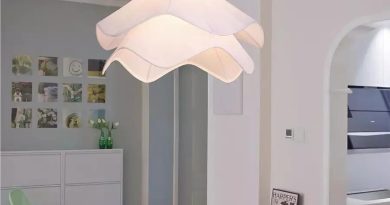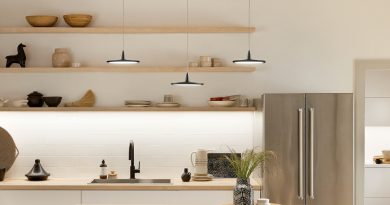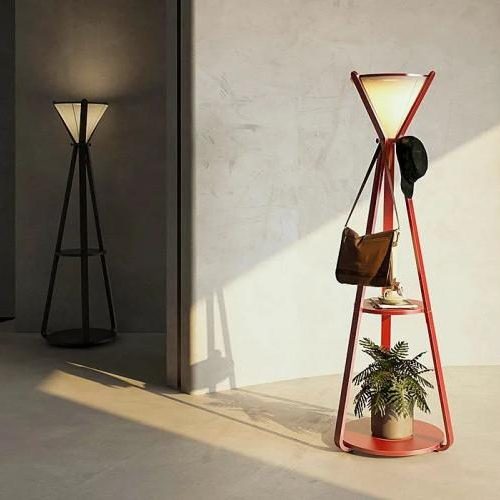10 Kitchen Design Ideas to Elevate Your Home’s Style and Functionality
The kitchen is often considered the heart of the home, and for good reason. It is where meals are prepared, memories are made, and conversations are had. As such, it is important to create a kitchen space that is not only functional but also aesthetically pleasing. A well-designed kitchen can enhance the overall look and feel of a home, as well as improve its functionality.
When designing a kitchen, there are several elements that can be incorporated to create a cohesive and functional space. These elements include open shelving, clever cabinet designs, the right lighting, natural materials and elements, a statement backsplash, bold color choices and accents, a thoughtful layout, cohesive textures, stylish and functional appliances, and unique decor and accessories. By carefully considering each of these elements and how they work together, you can create a kitchen that is both beautiful and practical.
Incorporating Open Shelving for a Modern Twist on Storage
One way to add a modern twist to your kitchen design is by incorporating open shelving. Open shelving not only provides additional storage space but also adds visual interest to the room. It allows you to display your favorite dishes, cookbooks, and decorative items, while also keeping them easily accessible.
There are several benefits to using open shelving in your kitchen. First and foremost, it creates a sense of openness and airiness in the space. Unlike traditional closed cabinets, open shelves do not visually weigh down the room. They also make it easier to find and grab items quickly, as everything is within reach.
When styling open shelves, it is important to strike a balance between functionality and aesthetics. Start by organizing items by category or color to create a cohesive look. Use baskets or bins to corral smaller items and keep them organized. Mix in decorative items such as plants or artwork to add visual interest. Finally, be sure to regularly edit and update the items on your shelves to keep them looking fresh and clutter-free.
Maximizing Your Space with Clever Cabinet Designs
Cabinets are an essential element of any kitchen design, as they provide much-needed storage space. However, traditional cabinets can often be bulky and inefficient. To maximize your space and create a more functional kitchen, consider incorporating clever cabinet designs.
There are several types of cabinets to consider when designing your kitchen. One option is to use pull-out cabinets or drawers, which allow for easy access to items stored in the back. Another option is to use corner cabinets with rotating shelves, which make use of otherwise wasted space. Finally, consider using tall cabinets that extend all the way to the ceiling, providing additional storage space for items that are not frequently used.
When organizing your cabinets, it is important to think about how you use your kitchen on a daily basis. Store frequently used items in easily accessible locations, and reserve harder-to-reach areas for items that are used less often. Use dividers or organizers to keep items neatly separated and organized. Finally, be sure to regularly declutter and reorganize your cabinets to keep them functioning at their best.
Choosing the Right Lighting to Highlight Your Kitchen’s Features
Lighting is a crucial element in kitchen design, as it not only provides illumination but also helps to highlight the room’s features. The right lighting can make a small kitchen feel larger, create a warm and inviting atmosphere, and enhance the overall aesthetic of the space.
There are several types of lighting to consider when designing your kitchen. Ambient lighting provides overall illumination and can be achieved through recessed lights or a central pendant light. Task lighting is focused lighting that is used for specific tasks such as cooking or food preparation. This can be achieved through under-cabinet lighting or pendant lights above the kitchen island. Finally, accent lighting is used to highlight specific features or areas of the kitchen, such as artwork or a statement backsplash.
When choosing the right lighting for your kitchen, it is important to consider both functionality and aesthetics. Think about how you use your kitchen on a daily basis and what areas need the most illumination. Consider the style and design of your kitchen and choose lighting fixtures that complement the overall aesthetic. Finally, be sure to layer your lighting by incorporating a combination of ambient, task, and accent lighting to create a well-lit and visually appealing space.
Bringing the Outdoors In with Natural Materials and Elements
Incorporating natural materials and elements into your kitchen design can create a warm and inviting atmosphere, as well as bring a touch of the outdoors inside. Natural materials such as wood, stone, and metal add texture and visual interest to the space, while also providing durability and longevity.
There are several types of natural materials to consider when designing your kitchen. Wood is a popular choice for cabinets, countertops, and flooring, as it adds warmth and character to the space. Stone, such as marble or granite, is often used for countertops or backsplashes, as it is durable and easy to clean. Metal, such as stainless steel or copper, can be used for appliances or fixtures to add a modern touch.
When incorporating natural elements into your kitchen design, it is important to strike a balance between functionality and aesthetics. Choose materials that are not only visually appealing but also practical for everyday use. Mix and match different materials to create a layered look that adds depth and dimension to the space. Finally, be sure to properly care for and maintain natural materials to ensure their longevity and beauty.
Creating a Focal Point with a Statement Backsplash

A backsplash is an important element in kitchen design, as it not only protects the walls from splatters and spills but also adds visual interest to the space. A statement backsplash can serve as a focal point in the kitchen, adding personality and style.
There are several types of statement backsplashes to consider when designing your kitchen. One option is to use a bold color or patterned tile to create a dramatic look. Another option is to use a natural stone or marble for a more luxurious feel. Finally, consider using a unique material such as glass or metal to add a modern touch.
When choosing the right backsplash for your kitchen, it is important to consider the overall style and design of the space. Think about the colors and materials used in the rest of the kitchen and choose a backsplash that complements the overall aesthetic. Consider the size and scale of the backsplash and how it will fit within the space. Finally, be sure to properly care for and maintain your backsplash to keep it looking its best.
Adding Contrast with Bold Color Choices and Accents
Color is an important element in kitchen design, as it can set the mood, create visual interest, and add personality to the space. Bold color choices and accents can add contrast and make a statement in your kitchen.
There are several types of bold color choices to consider when designing your kitchen. One option is to use a bold color for your cabinets or island, such as navy blue or emerald green, to create a focal point in the room. Another option is to use a bold color for your walls or backsplash, such as a vibrant red or yellow, to add visual interest. Finally, consider using bold accents such as colorful bar stools or pendant lights to add pops of color throughout the space.
When incorporating bold colors into your kitchen design, it is important to strike a balance between boldness and cohesion. Choose colors that complement each other and create a harmonious look. Consider the overall style and design of your kitchen and choose colors that enhance the aesthetic. Finally, be sure to use color strategically to create focal points and draw attention to specific areas of the room.
Streamlining Your Workflow with a Thoughtful Layout
A functional layout is crucial in kitchen design, as it can streamline your workflow and make cooking and meal preparation more efficient. A well-thought-out layout takes into consideration the placement of appliances, work surfaces, and storage areas, as well as the flow of traffic within the space.
There are several types of layouts to consider when designing your kitchen. One popular option is the U-shaped layout, which provides ample counter space and storage. Another option is the L-shaped layout, which is ideal for smaller kitchens and creates an efficient work triangle between the sink, stove, and refrigerator. Finally, consider an open concept layout, which combines the kitchen with the dining or living area to create a seamless flow between spaces.
When creating a thoughtful layout for your kitchen, it is important to consider how you use the space on a daily basis. Think about the tasks you perform most often and how you move around the kitchen. Consider the placement of appliances and work surfaces to create an efficient work triangle. Finally, be sure to leave enough space for traffic flow and allow for easy access to storage areas.
Mixing and Matching Textures for a Cohesive Look
Texture is an often overlooked element in kitchen design, but it can add depth and visual interest to the space. Mixing and matching different textures can create a cohesive look that is both visually appealing and tactilely pleasing.
There are several types of textures to consider when designing your kitchen. One option is to use textured materials such as brick or stone for your backsplash or walls. Another option is to incorporate textured finishes such as matte or hammered metal for your appliances or fixtures. Finally, consider using different materials with contrasting textures, such as smooth marble countertops paired with rough-hewn wooden cabinets.
When mixing and matching textures in your kitchen design, it is important to strike a balance between variety and cohesion. Choose textures that complement each other and create a harmonious look. Consider the overall style and design of your kitchen and choose textures that enhance the aesthetic. Finally, be sure to use texture strategically to add visual interest and create focal points within the space.
Upgrading Your Appliances for Optimal Performance and Style
Appliances are an essential element in kitchen design, as they not only provide functionality but also contribute to the overall style of the space. Upgrading your appliances can not only improve their performance but also enhance the look and feel of your kitchen.
There are several types of appliances to consider when designing your kitchen. One option is to choose stainless steel appliances, which are not only durable and easy to clean but also add a modern touch to the space. Another option is to choose appliances with a retro or vintage-inspired design, which can add a unique and nostalgic feel. Finally, consider incorporating smart appliances that can be controlled remotely or have advanced features such as built-in cameras or touch screens.
When upgrading your appliances, it is important to consider both performance and style. Choose appliances that are energy-efficient and have the features you need for your cooking and meal preparation needs. Consider the overall style and design of your kitchen and choose appliances that complement the aesthetic. Finally, be sure to properly care for and maintain your appliances to ensure their longevity and performance.
Infusing Your Personality with Unique Decor and Accessories
Personalization is an important element in kitchen design, as it allows you to infuse your personality into the space. Unique decor and accessories can add character and style to your kitchen, making it truly your own.
There are several types of decor and accessories to consider when designing your kitchen. One option is to display artwork or photographs that reflect your personal taste and interests. Another option is to incorporate unique or vintage-inspired accessories such as colorful dishware or antique utensils. Finally, consider adding personal touches such as a chalkboard wall for writing notes or a bulletin board for displaying recipes or reminders.
When incorporating unique decor and accessories into your kitchen design, it is important to strike a balance between functionality and aesthetics. Choose items that not only reflect your personal style but also serve a purpose in the kitchen. Consider the overall style and design of your kitchen and choose decor and accessories that complement the aesthetic. Finally, be sure to regularly update and refresh your decor to keep it looking fresh and interesting.
In conclusion, designing a kitchen is an exciting and important task that requires careful consideration of several elements. By incorporating open shelving, clever cabinet designs, the right lighting, natural materials and elements, a statement backsplash, bold color choices and accents, a thoughtful layout, cohesive textures, stylish and functional appliances, and unique decor and accessories, you can create a kitchen that is both beautiful and practical. Remember to consider your personal style and needs when designing your kitchen, and don’t be afraid to take risks and think outside the box. With a little creativity and planning, you can create a kitchen space that reflects your personality and enhances your daily life.
If you’re looking for inspiration to transform your kitchen into a bright and inviting space, look no further than this article on Natural Light Solar Lamp’s website. In their post titled “Bringing Natural Light into Your Kitchen Design,” they provide valuable insights and tips on how to maximize natural light in your kitchen. From choosing the right window treatments to incorporating skylights, this article offers practical advice to create a well-lit and energizing kitchen environment. Check it out here for expert guidance on enhancing your kitchen design with natural light.


